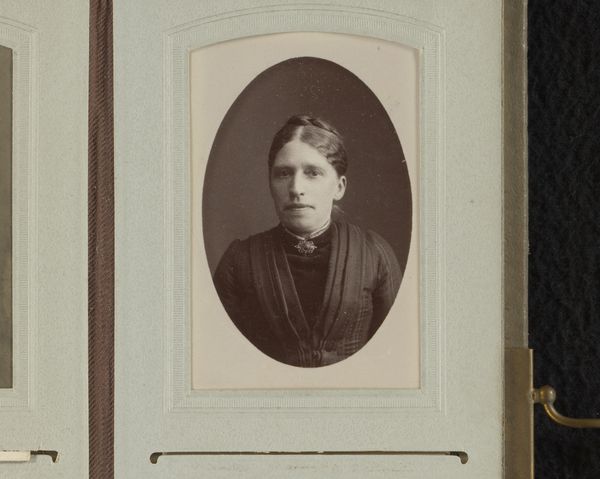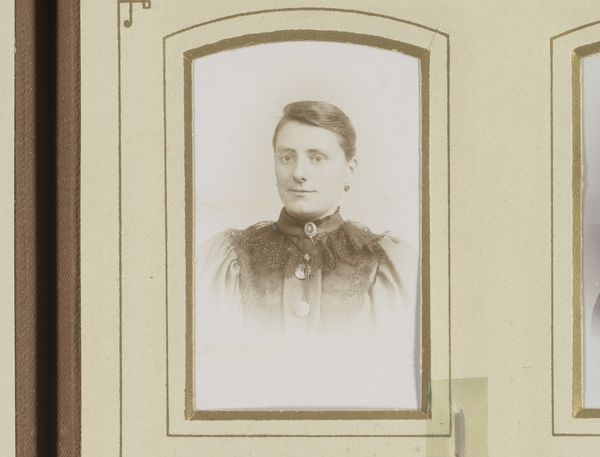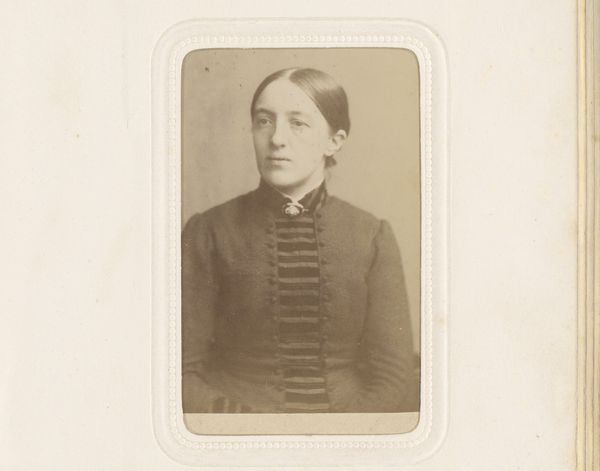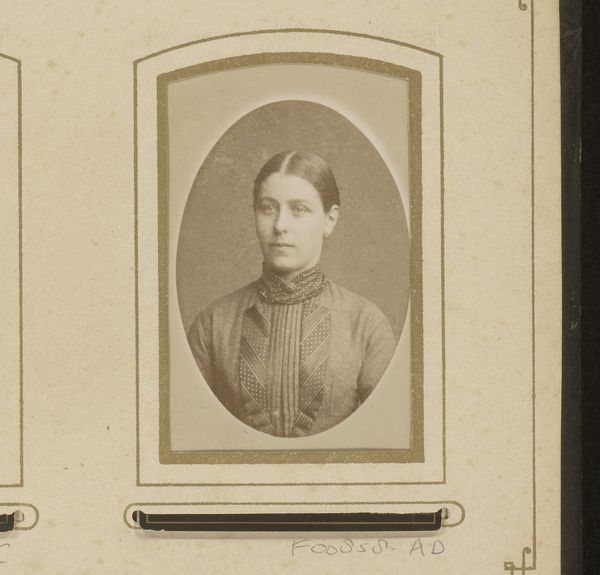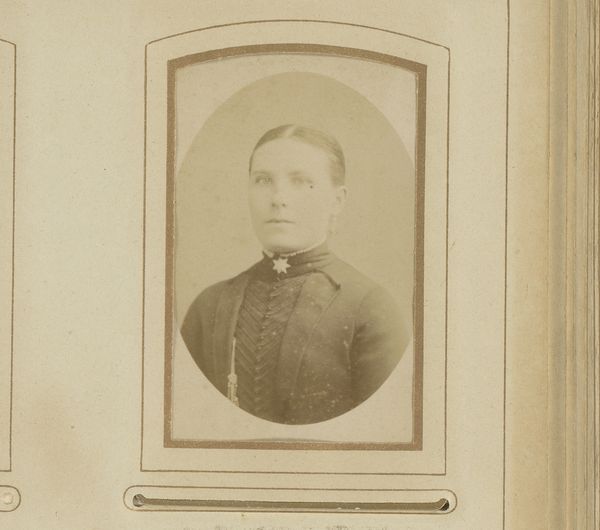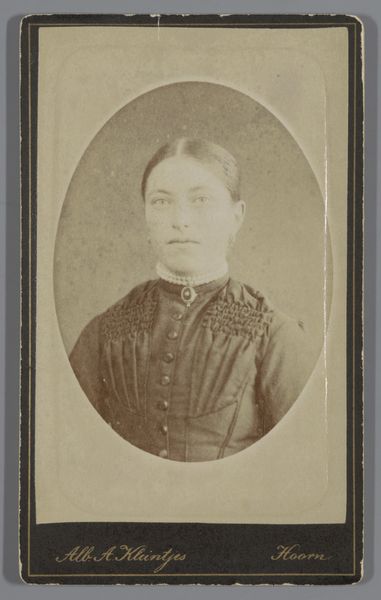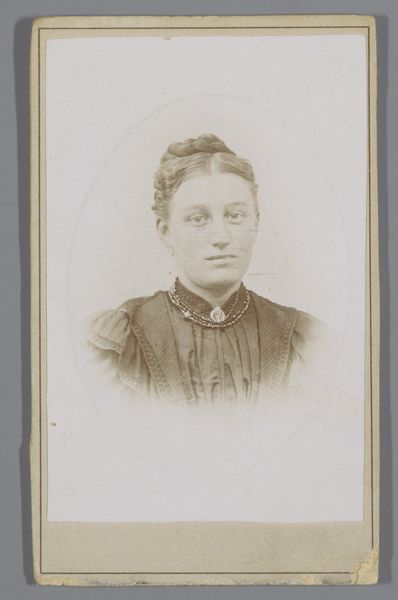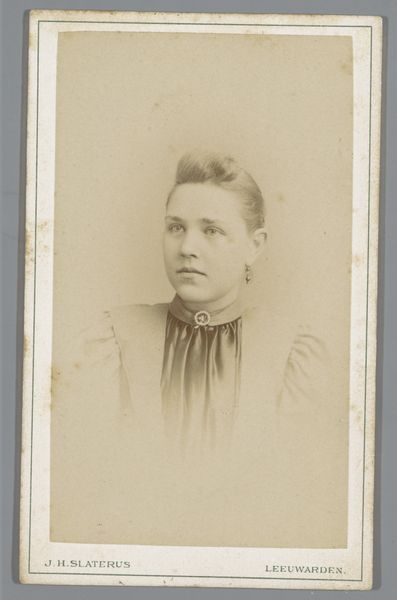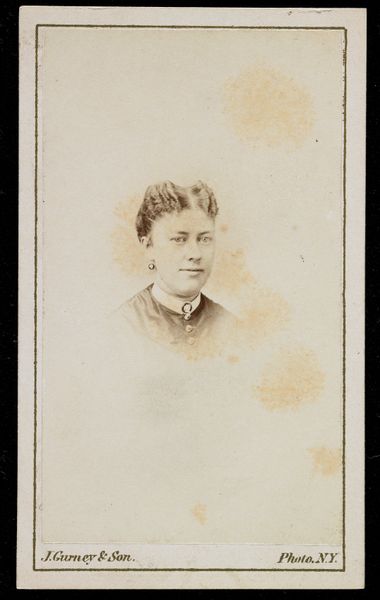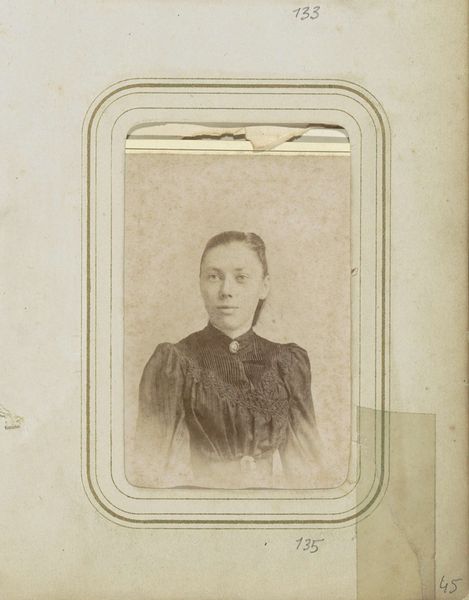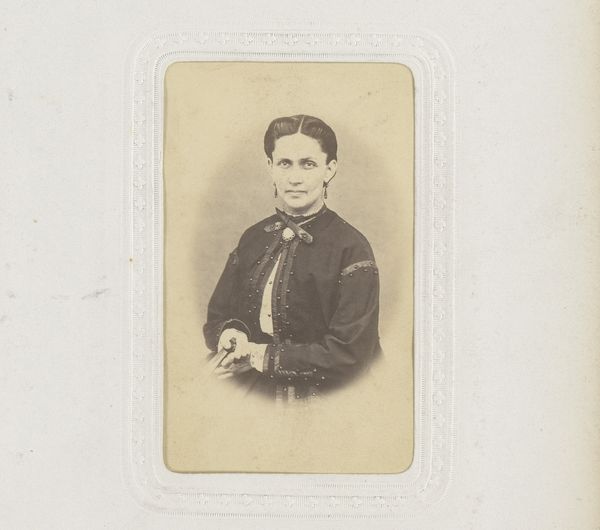
photography
#
portrait
#
photography
Dimensions: height 84 mm, width 54 mm
Copyright: Rijks Museum: Open Domain
Curator: Looking at this intriguing photograph, "Portret van een vrouw," by Max Büttinghausen, circa 1890-1910 and housed here at the Rijksmuseum, my initial reaction is one of somber reflection. There’s a quiet intensity in her gaze. Editor: There is something strikingly melancholic about it, and I think it might have something to do with the tonal qualities of this portrait and how they are generated photographically using the various technologies available at this time. Curator: Absolutely. The sitter embodies so much of the Victorian woman’s struggle with identity and imposed social roles. The lace at her collar, the subtle embellishment of her garment—they all speak to the performative nature of femininity during that period. Who was she beyond these prescribed presentations of self? Editor: Exactly! The materials used to produce this photograph become paramount. What sort of paper, what sort of developing process gives her skin this texture and look, and that helps cement the mood we are speaking of? It also reminds us about the larger labor that was being organized in these studios and throughout the history of photography itself. Curator: We see photography emerging as a democratic medium— suddenly everyone could theoretically possess their image. Yet, there remained deep chasms of inequality. Who had access to these studios, whose stories were deemed important enough to document? Editor: Well put, the photograph itself, through its inherent reproducibility, starts blurring class lines and access, so the tension between it becoming mass produced, or being individually posed for and crafted, helps cement and even create different historical interpretations about gender and identity. Curator: Indeed, these material considerations invite us to think more expansively about how class, gender, and technological change intersect and shape experiences. This woman and others had limited choices in terms of autonomy, education, self-expression, all interwoven within constraints placed by both photographic processes and culture at large. Editor: You are right; both photography's development as material craft and the culture of its use had a profound social impact, didn’t they? Looking at it in the gallery setting here reminds one of all those different stories and circumstances in play. Curator: Precisely, and to engage critically with images like this is a crucial way of acknowledging their complexity, challenging historical power structures, and uncovering their narratives. Editor: That's a lovely summation! The historical material constraints involved really illuminate both how we consume, but, also, importantly, how we produce and continue the dialogue around these images.
Comments
No comments
Be the first to comment and join the conversation on the ultimate creative platform.
